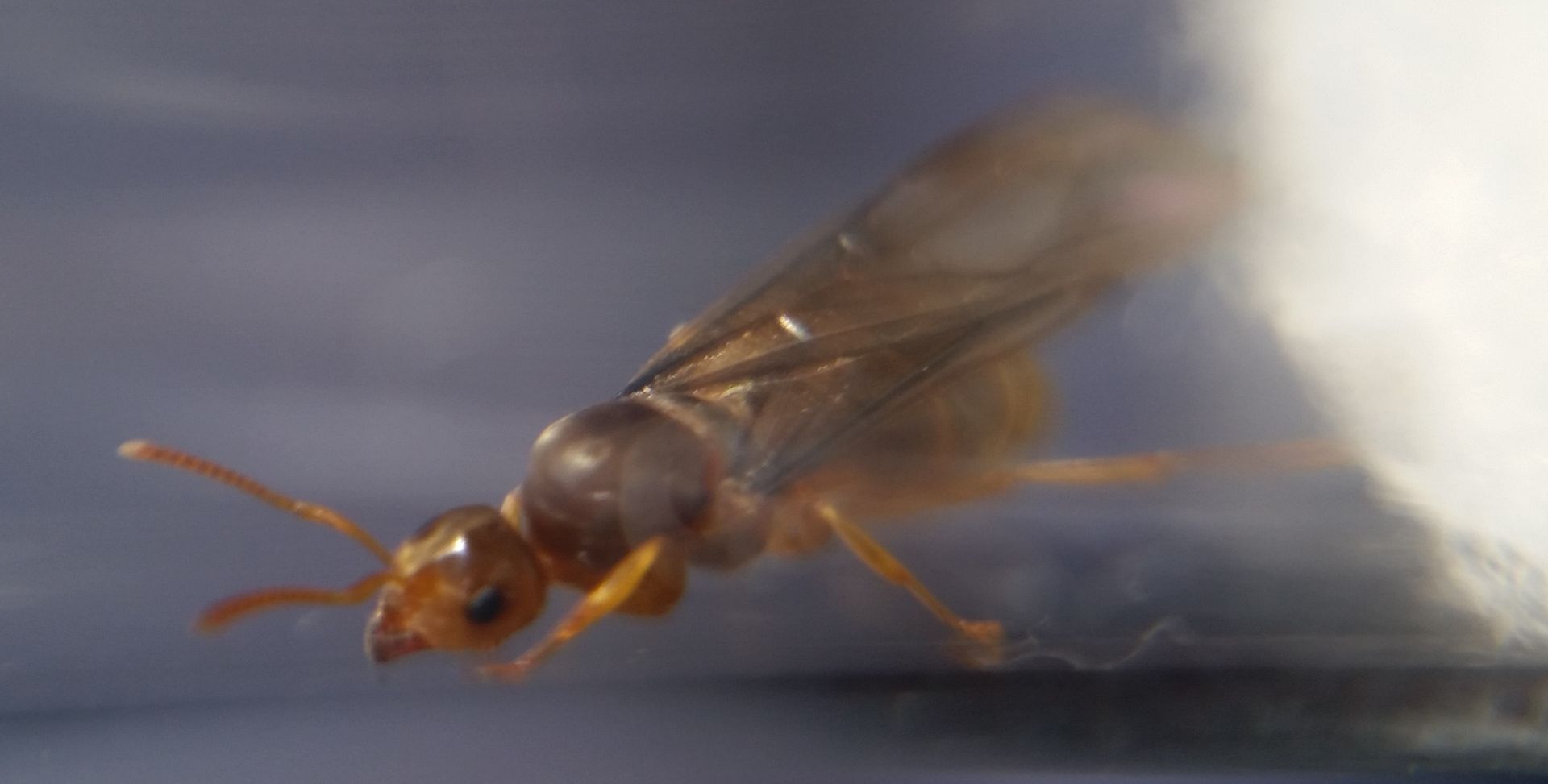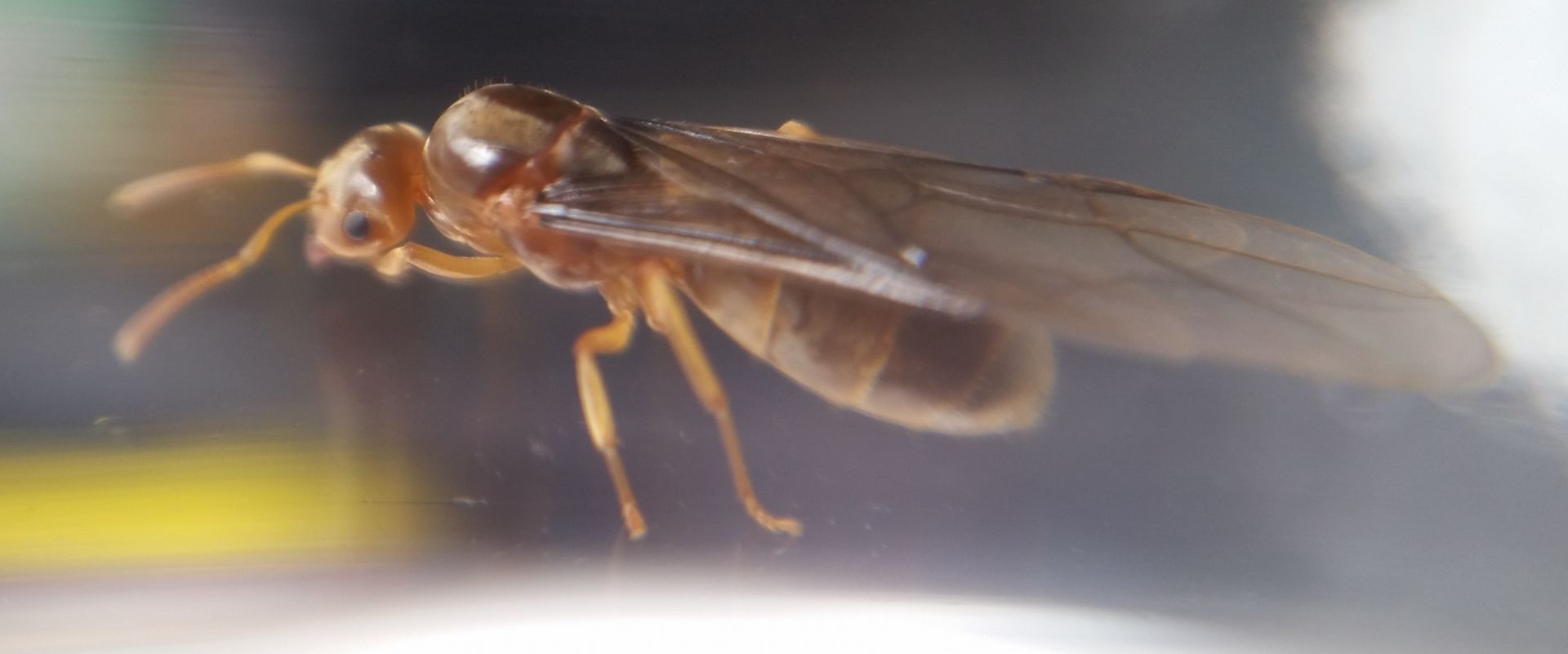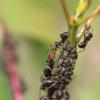After a fairly lacklustre summer with mostly my usual C. Novae. common in my area I struck success with 3 separate queens 2 days ago. As my ant identification skills are terrible I would like opinions on all three, but I will keep the ID posts separate in order to avoid confusion. I realize that this late in the season (up here anyway) it is possible that these are ejected queens that may turn out to be infertile, but we have been having some exceptionally warm weather so here's hoping.
ID 2 of 3
1. Location of collection: Ottawa, Ontario, Canada
2. Date of collection : 21 August 2020
3. Habitat of collection: Urban neighbourhood sidewalk
4. Length: 6.5 mm
5. Coloration, hue, pattern and texture: Brownish with yellow gaster stretch lines
6. Distinguishing characteristics: Winged
7. Anything else distinctive: N/A



















